
Typological Refugees
Pearls of Conflict in Culture and Marriage
Elizabeth Leuenberger-Kajs, July 11, 2018

I am an INFP type; thus, my superior function is introverted feeling (Fi). My area of comfort is focused inward. This most subjective function selects internal, personal values as the guiding force in striving for inner harmony (Haas & Hunziker, 2006, p. 103). Secondly, my balancing auxiliary is extraverted intuition (Ne) and I generally present as extraverted. Due to the inward turning of Fi, the outer expression of inner stirrings is subdued (Sharp, 1987, p. 75), so my dominant nature often goes unrecognized, leaving an impression of cold indifference, and leading me to feel isolated and misunderstood.My third function, introverted sensation (Si), adds a subjective quality but also contributes to difficulty with outer self-expression (p. 80), while my fourth, least-conscious inferior function, extraverted thinking (Te), an intellectual, data-driven tendency based on objective reality, is greatly incompatible with my dominant Fi.
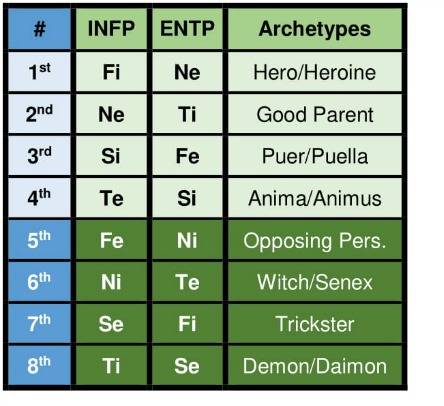
Cultural Strangers in Switzerland and America
Not only do individuals follow typological patterns—nations do as well. Just as individuals can be introverted or extraverted, so, observed Jung (1921/1971a), can cultures have an introverted or extraverted character and value certain type functions over others according to the current social climate. In extraverted cultures, the “chief value then lies with the object and man’s relation to it,” thus a collective character, whereas in introverted cultures, it “lies with the subject and his relation to the idea” (¶ 110). Furthermore, a state of perfect balance is never completely reached, either for cultures or individuals. Like individuals, “No culture is ever really complete, for it always swings towards one side or the other” (Jung, 1921/1971a, ¶ 110). Whatever its current typology, the collective impacts the individual and can be “injurious to individual culture. … There is a deep gulf between what a man … is as an individual and what he is as a collective being” (¶ 111).
Both my husband and I experienced this gulf in our collective cultures of origin: I as an introverted feeling (INFP) type in an extraverted thinking (ESTJ) culture, and my husband as an extraverted intuitive (ENTP) type in an introverted sensing (ISTJ) culture. We experienced our cultures of origin as outcasts while finding refuge in the other’s culture of discomfort. If the USA is ESTJ and Switzerland ISTJ, then one might assume their shared functions, extraverted thinking (Te) and introverted sensation (Si), would indicate strong cultural similarities since they only vary by swapped superior and auxiliary positions. However, having divided my life almost equally between the two countries, I have witnessed great differences in character. The USA’s ESTJ culture is driven by what Jungian analyst John Giannini (2004) described as the “ESTJ warrior mentality”: founded on pioneering heroics, it is characterized traditionally as a one-sided, patriarchal, elitist collective that values “tough-minded” individuals over the “tender minded,” (p. 510) and conformity to the power-wielding dominance of its primary extraverted thinking (Te). Those comfortable in such a culture tend to be collective- and object-oriented and are compatible with “aggressive, concrete, logical, and linear thought processes, and compartmentalized, detailed strategies” (p. 510). While this attitude is still evident, a notable shift is underway in the USA as feeling values gain foothold.

An INFP on the Move
When I first met my Swiss husband during our senior year of college in North Carolina, I was attracted to his outgoing personality and non-American otherness. As an introverted feeling-type growing up in ESTJ America, I always felt different. My inferior function, extraverted thinking, is my most ill-adapted, childish, touchy spot, yet that was the function most valued by the world I lived in. Conversely, the function in which I was most comfortable, Fi, was the repressed, inferior function within the greater culture. Thus, I felt inferior, or at least like an outsider.
My parents were also introverted, so our family lived a rather introverted lifestyle, not typical of the more collective-oriented, extraverted “American way.” Though I was generally well-liked, the world around me always felt foreign, so I turned heavily into my introverted, subjective world. Earliest memories include stubborn refusals to participate in group activities and displays where I felt observed or scrutinized. I took refuge in my stable, introverted, rural family home culture and surroundings, yet even within my large family I often felt suffocated and undervalued, seeking escape, withdrawing to the woods or other secret places. In adolescence, while others joined clubs and teams, I enjoyed hours alone reading or playing the violin; in college, while others joined sororities, I vehemently declared myself a “GDI” (God-Damned Independent).
Dominant introverted feeling types tend to avoid self-revelation and “can appear cold although feeling a passionate idealism,” keeping their “own wants and needs behind a virtual ‘wall’ to ensure protection of fragile values” (Shumate, 2017, p. 21). I am often seen as insensitive and unfeeling, guarded and stoic or strong, and I can be perceived as shy or arrogant. Extraverted feeling in the opposing personality position, according to the Beebe model, results in difficulty engaging in small-talk, and self-doubt when relating to others can lead to self-isolation and alienation (p. 26). I simply tend to keep deeper, sensitive, and intense feelings to myself, and, struggling with awkward attempts at fulfilment of emotional needs in relation to others, instead seek solitude while enduring a general but mild loneliness.
Though my family rarely travelled, my introverted mother was an avid reader who travelled the world in her head, reading every chance she could. Thus, our home was filled with history books, encyclopaedias, National Geographic magazines, and an impressive globe. While I withdrew from the world around me, the expansive tendencies of my auxiliary extraverted intuition (Ne) piqued my interest in the world I saw on the covers of books and magazines: I developed an early fascination for what I might be missing out there. As my strongest extraverted function, Ne, became my way of approaching outer life, I felt that somewhere far away out in the world there just might exist a way to feel more at home.
This compulsion to seek outside grounding in an uprooting, un-grounding manner might be attributed to my least conscious function, introverted thinking (Ti). When it operated daimonically, it challenged my limits, pushing me outside of my comfort zone. Meanwhile, my trickster function, extraverted sensation (Se), is oppositional to my home- and stability-seeking eternal child, Si. I longed to escape the draining Te pressure to conform in America, which neither acknowledged nor valued my strengths.
An ENTP at Home Away From Home
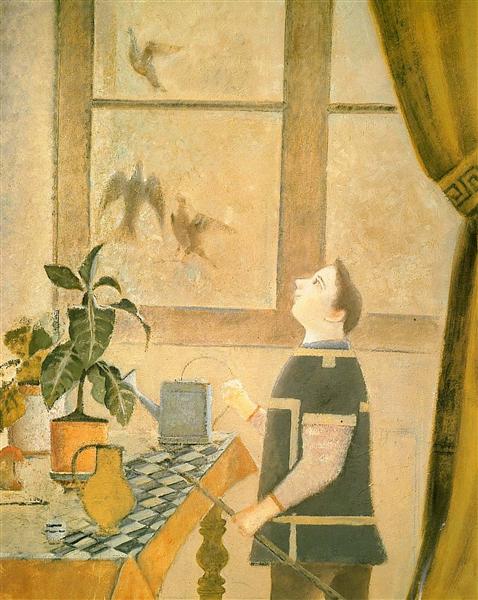
Despite what was worrisome behavior for his parents, he insists he was always under control and knew he was headed somewhere big, in tune with his pioneering Ne nature. He needed to break away, and his extraverted intuition found a renewed freedom in the extraverted USA. Studying in the land of “life, liberty, and the pursuit of happiness,” he came into his own, finally regaining the sense of freedom he had not experienced since his childhood in Japan. After university, one business success and adventure led to another, and his passion for new challenges drove him around the globe for ten years before a hesitant return to Switzerland (yet with an international career allowing frequent escape). Being abroad gives him freedom, because when he is outside Switzerland, he stated, if things go wrong or become stale, “there is always an escape outlet (Switzerland) to fall back on.” His trickster Fi may be at work here because if he stays too long in Switzerland, inspiration fades and he feels stuck, so Switzerland is not really an escape. Perhaps it is a feature of his ENTP type that every departure, change, or move is a closing of a door: no attachments. Only Japan triggers for him a feeling of nazugashii, a Japanese word denoting reminiscent longing, which in his case means nostalgia for days of youthful freedom. Swiss expectations and cultural boundaries constrain his freedom, strangling his world-is-my-oyster mentality.
As a result of his extraverted intuitive traits, he had always felt misunderstood, undervalued, and pressured by expectations to squeeze into an ill-fitting mold by his conservative Swiss ISTJ culture and family style. There is something unmistakable in the character of those for whom Ne dominates (Jung, 1921/1971b, ¶ 613). ENTPs in particular are unorthodox, often standing out as the archetypal puer: rebellious, egocentric, and free-spirited. Shumate (2017) observed that their Te, in the archetypal witch position, may lead them to argue just for provocation and to “make a rule of breaking rules” (p. 20). This earned my husband the reputation of family Luusbueb (Swiss-German slang for a boy who is a troublemaker) and charming but boorish black sheep. As Jung stated, ENTPs are “never to be found in the world of accepted reality-values, but [have] a keen nose for anything new and in the making” (1921/1971b, ¶ 613). Pioneers and adventurers, they always seek the new, and with their Fi trickster, remain noncommittal and emotionally distant, not wanting to be tied down. Jung noted that ENTPs are not driven by the judging functions of feeling or thinking but by an often seemingly unscrupulous “loyalty to [their] own vision,” and thus are often business tycoons and entrepreneurs (¶ 613). They will dive into a new interest with passion and dedication yet lose interest just as quickly. “A day will come when nothing will deter [them] from regarding as a prison the very situation that seemed to promise [them] freedom and deliverance,” (¶ 613). My husband, a self-proclaimed “international bastard” and rootless outsider, tends to seek escape in every instance when life feels oppressive, boring, or stagnant.
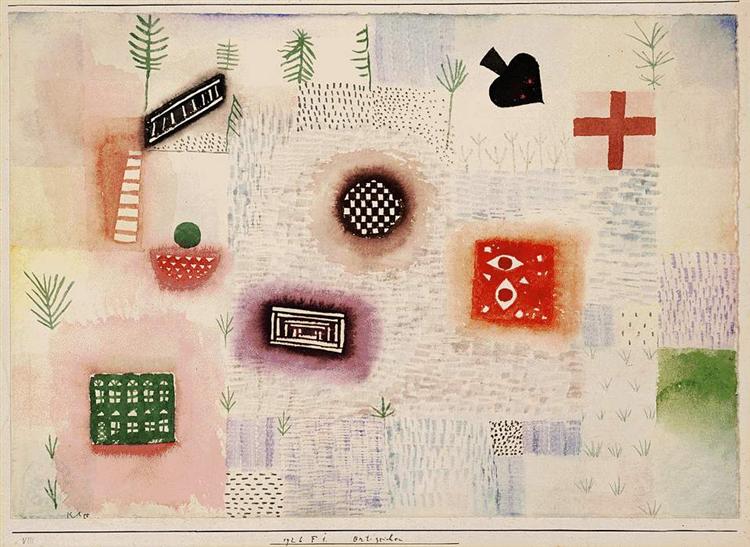
Because his preferred judging function (Ti) was suppressed by his Te culture, he was operating in witch/senex mode much of the time, and Te in the senex position, as Shumate (2017) noted, may lead one to “secretly criticize oneself for not being disciplined enough” (p. 20). Thus, a vicious cycle ensued: he continuously pushed for a more disciplined warrior/hero-Te persona while pushing Fi—already deep in the shadows for his type—further down into the unconscious. As he stated, drawing a square over his heart, “I put all those feelings in a box, locked it, and threw away the key.” A trickster Fi may trick one “into believing one’s values aren’t as important as they actually are” (p. 24), so he continued to deny his feeling world and struggled to keep his Ti need for freedom and Ne need for nonconformity tightly reigned and boxed into a despised Si/Te-style business suit. He even settled back into his dreaded, tightest box of all, Switzerland. Denying deepest values lest he be “too soft,” he suppressed his creative, freedom-loving nature while developing his Te function to the point of neurosis, a trigger for a midlife crisis.
Attraction, Projection, and the Tipping Point
We are drawn not only to those with shared hobbies or values but also to those on whom we can project our inferior attitudes and functions, allowing their personality strengths to compensate those functions for us, and vice-versa. In so doing, like muscles, our personality strengths develop and grow while underused, weaker “muscles” remain underdeveloped and atrophy. As long as this imbalance continues, the degree of polarization expands (Jung, 1921/1971a, ¶¶ 105-106). Couples tend to pair with their typological opposites, unconsciously allowing their spouse/partner to “complete” them, enabling a continued lack of development of their inferior functions (Wheelwright, 1982, p. 56).

In our case, we neglected our dominant functions. I set aside my own feeling function, pushing it down, giving up values so important to me. In attempting to do what I believed was expected by the outside world, I denied my need for stability, close relationships to family, and the world of nature, adapting to my husband’s detached way of life and tough, armor-coated feeling function. My husband charged forth with an elevated thinking style, neglecting his own feeling-values and development. I found myself increasingly irritated by what I saw as my ENTP husband’s self-absorption in his own agenda and lack of relatedness and emotional connectivity, and he found my efforts to relate through open communication needy, perceiving my attempts to discuss feelings as “attacking.” We both grew bitter, ironically envying the other for just those areas that irritated us in the other: I envied him his relative freedom in his state of unattachment while he envied me my established, stable support network of friends and community. We both gradually began to suffer from our own suppressed and neglected functions, blaming the other in large part for our disappointments, frustrations, and growing disconnect.
Jung (1955-56/1970) pointed out that while disappointment in a loved one births bitterness, it also serves as a stimulant for the differentiation of one’s feeling function: “The disappointing behavior of someone one loves, can supply the impulse either for a more or less brutal outburst of affect or for a modification and adjustment of feeling … . This culminates in wisdom” (¶ 334). Just as an irritant in an oyster causes changes that produce a pearl, such personality differences within a marriage are irritants which demand that the marriage either evolve or come to an end. With forced reflection and rational insight, new understanding for each other as well as for ourselves had to be cultivated.
Midlife: The Sleeping Giant Awakens
According to Jung, the psyche has a teleological drive toward personal growth. We develop and differentiate those conscious functions in the early half of life that best suit our needs for that phase. However, as we reach midlife, our goals and needs begin to shift, and the attitudes and functions which have served us best begin to stagnate, wear out, and break down, inviting a new way of functioning. As Jung (1912/1966a) said, “All the illusions… projected upon the world and upon things gradually come home… jaded and way-worn” (¶ 90). Projections are dropped, as neglected or suppressed, unconscious aspects of a personality stir, seeking balance and development.
The awakening of those functions lying mostly dormant in the unconscious of our personality presents an opportunity for conscious renewal and growth (Jung, 1912/1966a, ¶ 92). This is where the neglected fourth or inferior function cries out for attention, opening a door to the unconscious and providing opportunity for personal development. As von Franz (1971/2013) noted, this anima/animus function “always makes the bridge to the unconscious” (p. 16). Here we begin to develop awareness of the four opposing functions relegated there. It presents a wealth of opportunity, but von Franz also reminded us that the inferior function is, in its inferiority, slow and infantile. Its cries for attention are often met by the ego with resistance, impatience, and heightened childish sensitivity. I recall many frustrating sessions of math tutoring in high school from my Te-dominant father that ended in tears. My husband’s Te-type business-world enthusiasms—organizational planning and financial strategy where his interests grew increasingly over the years—bored me, leaving him feeling undervalued. This not only led to bitterness on his part but did nothing to encourage relatedness, leaving me feeling overdependent and bitterly underrepresented. I slowly awakened (with resistance) to the need to embrace the areas represented by these functions. While it is tempting to avoid this frustrating stage of development completely, it is a key turning point and chance to find new energy. We must be patient, slow down, and turn inward, allowing “the unconscious a chance to come in” (p. 18). As von Franz stated, “The inferior function brings a renewal of life if one allows it to come up in its own realm” (p. 21).
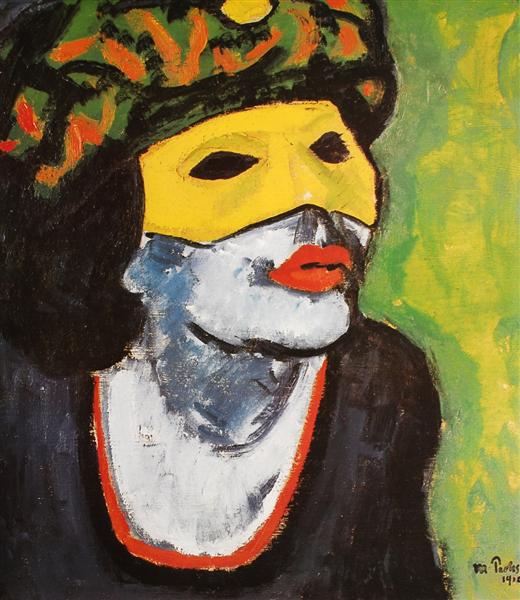
Jungian analyst Daryl Sharp (1987) noted, “The fascination with one’s opposite type … seldom lasts indefinitely” (p. 77). Eventually one or both partners grow “weary of carrying the other one’s load” (Wheelwright, 1982, p. 56). In our case, my husband and I reached this point almost simultaneously, and a vicious cycle ensued. His years of intense focus on business, career, and familial responsibilities kept him in his shadow functions: extraverted thinking (Te) his senex function and extraverted sensation (Se) his eighth or demonic function. In neglecting his feeling functions and his own independence- and adventure-oriented values, my husband—the magnetic, restless, Machiavellian business man—found himself in a state of great imbalance. His Ne function, pushed underground by the prevailing Si culture, drove him to increasingly rebel against stable Swiss-style home and family life (and marriage). He neglected his Si-anima body and soul and instead channeled all his creative energy into finance and business. His interest in personal relationships faded, and he gradually withdrew from previous social and sports activities and hobbies. Eventually he found himself lonely and detached yet feeling smothered and struggling as his starved introverted feeling began to rise in compensation to his overgrown extraverted thinking.
Meanwhile, I began to experience a surge of signals from my unconscious of a growing resentment and feeling of oppression at my tendency to allow him dominance over practical matters. Brewing resentment toward my husband’s “management” style of relationship and a longing for deeper intimacy surfaced in my dreams as angry, resentful, pursuing animus figures. I became aware of an almost competitive, take-charge sense of animus drive to assert myself and seize independence, particularly in the Te realm of planning I had previously disregarded. Meanwhile, my husband’s inferior Si would have liked to let me handle logistics and details. In business, he excelled at macro- rather than micro-management, and after years of overemphasizing Te and Si functions at work, he experienced increasing resentment toward carrying those functions at home by handling family and home logistics, and although I felt the growing urge to take on more of this role, his shrugging off this burden felt like pressure on my own responsibility-averse eternal child Si and inferior Te.
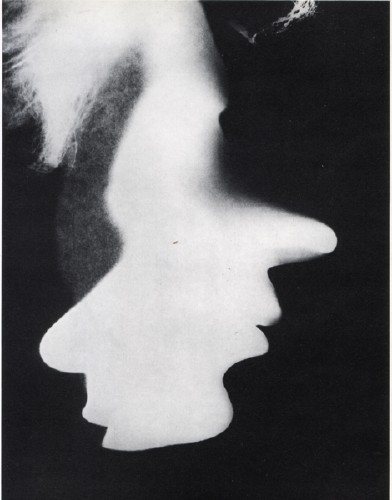
Jung (1921/1971a) observed, “Suppressed inferior functions cannot be indefinitely excluded … . The time will come when the division in the inner man must be abolished, in order that the undeveloped may be granted an opportunity to live” (¶ 112). Tiring of so much lonely Fi, my psyche woke my inferior Te-animus, which emerged from my dreams into reality, bringing on new drives and interests. I began taking back those projections, relieving some of the burden that constrained my husband’s Ne nature, and after an erratic start, he began the painful and hard work of prying open the locked box of his neglected feeling values. Nevertheless, while it may have provided some relief of tension, I felt a new pressure as the high-flying, demanding, rebellious nature of my own puerile Si together with my Te animus set high goals, standards, and challenges. During a tumultuous period for us both, the timing of these mutual shifts toward a rebalancing of our personalities now demands our realignment both as individuals and as a couple. Critical examination from a typological perspective enables us to depersonalize and embrace conflicts, seeking to re-connect through dissonance and awareness of differences, in a new, open mode of deeper understanding.
Fight or Flight?
The midlife shift after years of forced extraverted living alongside my extraverted husband has led me to develop even more extraversion as my own inferior function, extraverted thinking, was put into motion, even if at the expense of my own authentic feeling values. At the same time, the inward, closed nature and rigidity in Switzerland has increasingly irritated both of our expansive Ne tendencies. Navigating these changes in our individual personalities, my husband and I, in classic Ne-style, have begun feeling the urge to flee. We have felt compelled to free ourselves from the tight constraints of the relationship as well as the location, in search of a new comfort zone for our personalities’ preferred natures. We have begun to look beyond our symbiotic marital relationship in order to develop our individual selves, going our own ways both inwardly and outwardly, forming places for ourselves abroad, creating space and delineating separate worlds of our own. My husband is shaping his professional life in a way that allows him to spend a great deal of time abroad away from family while I have begun studying abroad and traveling alone extensively, as well. In this way, we have gained room and perspective for self-development as well as escape outlets from the chafing of our differing personalities.
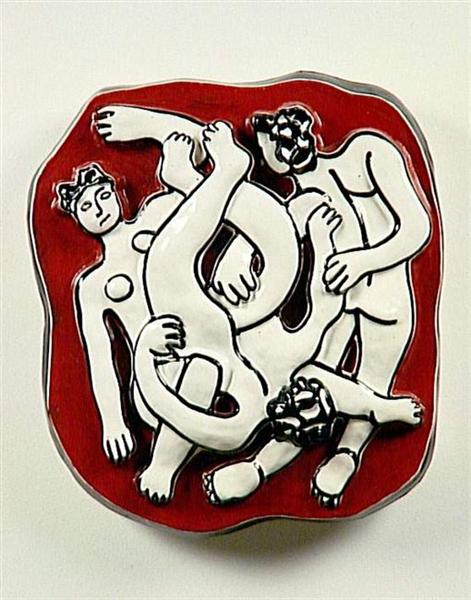
Beneath the neglected functions there lie hidden far higher individual values which, though of small importance for collective life, are of the greatest value for individual life… that can endow the life of the individual with an intensity and beauty he will vainly seek in his collective function. The differentiated function procures for him the possibility of a collective existence, but not that satisfaction and joie de vivre which the development of individual values alone can give. (¶ 113)
Jung (1933/1996) discussed the common mistake of couples over-emphasizing “togetherness” or identification with the other, a participation mystique which constitutes “a violation of the principle of individuality.” Fortunately, this tendency is opposed by a countermovement whereby “you prevail against the objects of your love and repress them by your very self-evident identity. You handle them as if they were yourself, and naturally there will be resistances” (p. 7). Such resistances constitute “a most useful and important instinct: you have resistances, scenes, and disappointments so that you may become finally conscious of yourself” (p. 7). Thus, while over-identification within relationship—or seeking an “other half” to “complete me”—is detrimental to the ultimate individuation goal of Self or inner wholeness, we find fuel for the fire of self-awareness within the ups and downs of an imperfect I-thou relationship.
Jung did not deny the importance of relationship to the process of individuation. While the eventual dissolution of projections is vital to self-awareness, he emphasized the need for one to remain in continued human relationship, “for without a relationship of some kind he falls into a void” (Jung, 1946/1966b, ¶ 285). Esther Harding reported Jung as saying, “it is impossible to individuate without relatedness” (as cited in Savage Healy, 2017, p. 238). Despite our differences and the temptation to go our separate ways, my husband and I have chosen to remain married—at least for the time being—albeit respecting one another’s individual paths. We are together, separately … and slowly, we change. As two individuals in relationship, we are encouraging and granting one another room and space to grow.
Each individual self is a home, the foundation laid with a certain structural frame and floorplan, but rooms are decorated, refinished, renovated, and repurposed over time. We cannot escape ourselves, but we can renovate, coming more fully into ourselves, wherever we are. As John Beebe (2004) said, “The development of consciousness involves the ability to summon the various functions at appropriate times in appropriate ways” (p. 90). Type functions are the rooms we move in and out of. We do not move throughout the house in the exact same pattern every day. We flow in and out, adjusting furnishings as our life needs require. The more familiar we are with our own rooms and the homes of others, the more successfully we can effectively live in our own house, as well as find our way around the homes of others. Understanding our typological movements makes available more of the tools our personalities possess, that we may develop individuality and find our sense of home and relative freedom, wherever, and with whomever, we are.
References
Beebe, J. (2004). Understanding consciousness through the theory of psychological types. In Cambray & L. Carter (Eds.), Analytical psychology: Contemporary perspectives in Jungian analysis (pp. 83-115). Hove, UK: Brunner-Routledge.
Giannini, J. (2004). Our ESTJ national pathology. In Compass of the soul (pp. 509-626). Gainseville, FL: Center for Applications of Psychological Type.
Haas, L. & Hunziker, M. (2006). Building blocks of personality type: A guide to discovering the hidden secrets of the personality type code. (n.l.): Eltanin Publishing.
Jung, C. G. (1966a). The problem of the attitude-type. In Read et al. (Series Eds.), The collected works of C. G. Jung (Vol. 7, pp. 41-63). Princeton, NJ: Princeton
University Press. (Original work published in 1912)
Jung, C. G. (1966b). The psychology of the transference. In Read et al. (Series Eds.), The collected works of C. G. Jung (Vol. 16, pp.163-323). Princeton, NJ: Princeton University Press. (Original work published in 1946)
Jung, C. G. (1970). The personification of the opposites. In Read et al. (Series Eds.), The collected works of C. G. Jung (Vol. 14, pp. 89-257). Princeton, NJ: Princeton University Press. (Original work published in 1955-56)
Jung, C. G. (1971a). Schiller’s ideas on the type problem. In Read et al. (Series Eds.), The collected works of C. G. Jung (Vol. 6, pp. 67-135). Princeton, NJ: Princeton University Press. (Original work published in 1921)
Jung, C. G. (1971b). General description of the types. In Read et al. (Series Eds.), The collected works of C. G. Jung (Vol. 6, pp. 330-407). Princeton, NJ: Princeton University Press. (Original work published in 1921)
Jung, C. G. (1996). The psychology of Kundalini yoga: Notes of the seminar given in 1932 by C. G. Jung. (S. Shamdasani, Ed.). (Original work issued privately in 1933)
Savage Healy, N. (2017). Toni Wolff & C. G. Jung: A collaboration. Los Angeles, CA: Tiberius Press.
Sharp, D. (1987). Personality Types: Jung’s model of typology. Toronto, CA: Inner City Books.
Shumate, C. (2017). The function-archetype decoder. Jung’s eightfold way (forthcoming). Adapted with permission from McAlpine, R., Shumate, C., Evers, A., & Hughey, D., The function-archetype decoder [software program], 2009; Louisville, KY: Type Resources.
von Franz, M.-L. (2013). The inferior function. In M.-L. von Franz & J. Hillman, Lectures on Jung’s typology. Putnam, CT: Spring Publications. (Original work published in 1971)
Wheelwright, J. B. (1982). Psychological types. In St. George and the dandelion (pp. 53-77). San Francisco, CA: C. G. Jung Institute of San Francisco.
Images
Balthus (1959). The child with pigeons. Retrieved from wikiart.org
Easley, T. (n.d.). Retrieved from unsplash.com
Klee, P. (1926). Place signs. Retrieved from wikiart.org
Leger, F. (n.d.). Acrobats. Retrieved from wikiart.org
Macke, A. (1910). Sailing boat on the Tegernsee. Retrieved from wikiart.org
Magritte, R. (1928). The lovers. Retrieved from wikiart.org
Moholy-Nagy, L. (1923). Double portrait. Retrieved from wikiart.org
Pechstein, M. (1910). The masked woman. Retrieved from wikiart.org



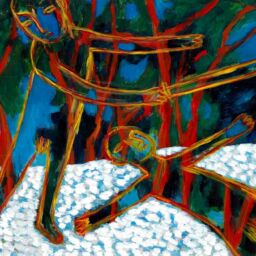

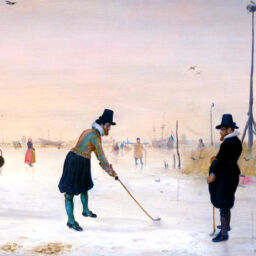
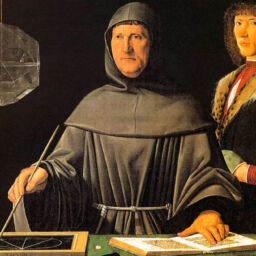

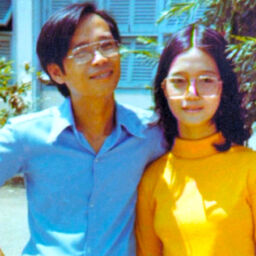
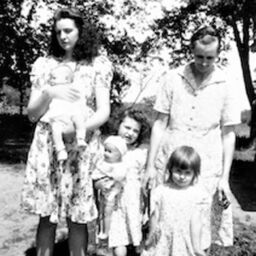
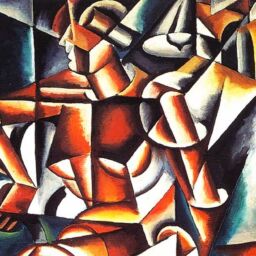
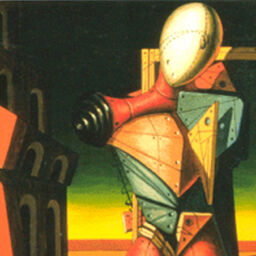
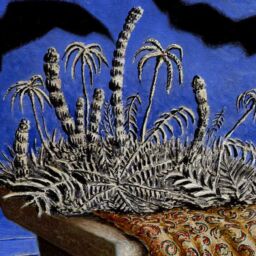
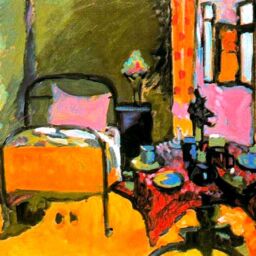


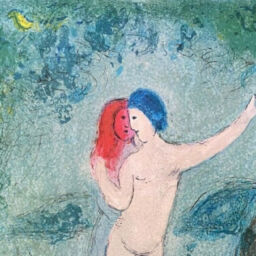
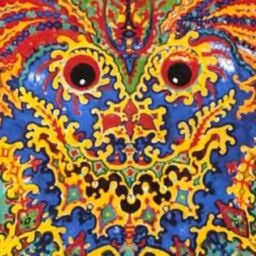
I nearly had a nervous breakdown reading through some of ms. Elizabeth Leuenberger‘s essay…. it was a roller coaster of feelings and projections on my part. In my family and neighborhood ( western suburbs of Chicago, Illinois) we were surrounded by many “go getters” and superstars in sports, business and entertainment. Fortunately or unfortunately ( depending on perspective) my mother was I intermountain Mountain Westerner. I was only kid in my neighborhood that grew up with a father with thick Chicago Outfit ( mobster) type accent and mother with a Utah Twang. It was was quite a mess. Couple this with a small liberal arts college which had recently relocated nearby ( George Williams college) with student from all over the world…..the CEO’s, CFO’s and COO’s paid a particularly high price for thier upper middle class lifestyle. travel, ubiquitous, copious amounts of travel was a distguishing factor in this lifestyle. I can’t tell yah all the millionaires and several billionaires that live out of a suitcase. I don’t envy a one of them one bit. I only covet a small fraction of thier money. My Sister Ms. Catherine Rahn-Root had a junior high school teacher who was in the Ginues world book of records as “ the most traveled man in the World “…..weeeyou, that’s mouthful. But I found the most meaningful moments in my life were intimate moments with family and close friends. Subsequently I’m very much like my mother, I think in terms of travel, as how might bring me closer family (inner and outer) ? Maybe living out on remote Western ranches shaped her feeling ? Wennimuca is a pretty god forsaken place as Joseph Henderson could attest. In any case I like how you use the metaphor of the refurbished rooms. I had a very poignant dream about a similar motif. In it i had a nicely refurbished “ front room” in a large California ranch style home ( not unlike Eugene O’Neil) which was to serve as my place of writing. The references to family were everywhere. I’m thinking of family dramas like long journey into the night and a death in the family. Take care Ms. Elizabeth Leuenberger……jeff